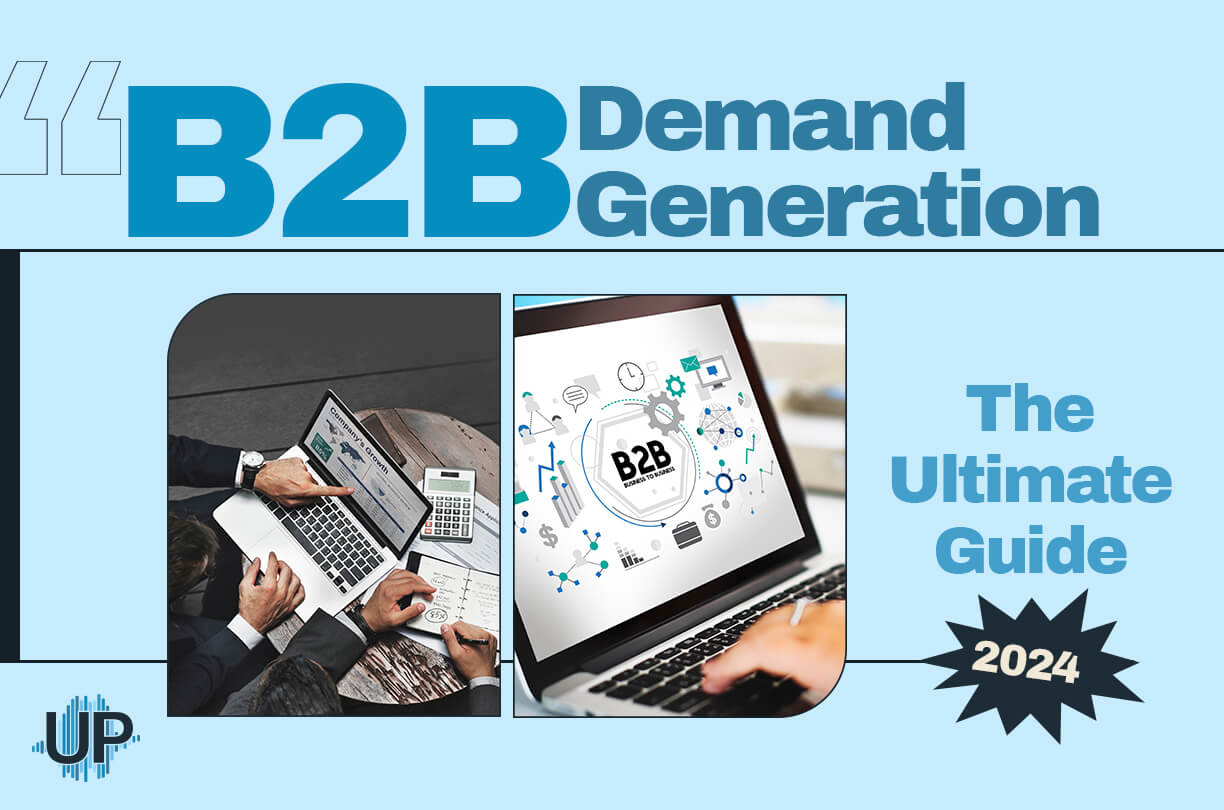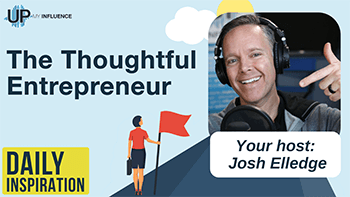
In the ever-evolving and fast-paced realm of business marketing, B2B demand generation takes center stage as a crucial and transformative cornerstone.
As we embark on the journey into the promising year of 2024, it becomes paramount to delve deep into the intricacies of B2B demand generation, grasp its monumental significance, and comprehend how it's currently shaping the landscape of modern marketing strategies.
In this comprehensive ultimate guide, we will not merely scratch the surface; we will plunge headfirst into the core concepts, dissect the traditional methods, explore innovative avenues, and gaze into the horizon to decipher the future trends.
Understanding B2B Demand Generation
Let's talk about the ways that understanding these concepts will empower you to unlock the immense power and potential of B2B demand generation!
B2B demand generation is a multifaceted and dynamic practice that transcends mere terminology; it represents the intersection of art and science. At its heart, it's about cultivating interest and desire among businesses for your products or services within the vast and diverse B2B landscape. It's akin to orchestrating a symphony, where every note represents a strategic move, designed to resonate with and captivate potential business clients.
B2B demand gen isn't just a cog in the marketing machine; it's the very engine driving the entire process. It's the catalyst that sparks awareness, nurtures budding prospects, and ultimately fuels the engine of conversions.
In an era where competition is fierce, and the digital realm reigns supreme, businesses that master the art of demand generation are bestowed with a competitive edge, positioning them to not only thrive but to flourish.
While the core principles of demand generation remain rooted in creating interest and demand, the B2B context weaves a tapestry with distinct threads.
Unlike the relatively straightforward B2C landscape, B2B demand generation operates within a complex ecosystem characterized by elongated sales cycles and a multitude of decision-makers.
Understanding and embracing these differences is paramount for crafting strategies that truly resonate and deliver results.
B2B demand generation is more than just a buzzword; it's the art and science of creating interest and demand for your products or services within the B2B market. It involves a series of carefully orchestrated strategies and tactics aimed at attracting and engaging potential business customers.
Demand generation isn't a standalone process; it's an integral part of the B2B marketing funnel. It plays a pivotal role in creating awareness, nurturing prospects, and ultimately driving conversions.
In today's competitive landscape, businesses that excel at demand generation are better positioned to thrive.
While the underlying principles of demand generation remain similar, the B2B landscape has its own unique nuances. Understanding these differences, such as longer sales cycles and multiple decision-makers, is essential for tailoring your strategies effectively.
The Difference Between Demand Generation and Lead Generation
In the intricate world of marketing, the terms “demand generation” and “lead generation” often intertwine, but they serve distinct purposes in the overall customer acquisition process.
Demand generation is the broader strategy, encompassing a set of marketing activities designed to create awareness and interest in a company's products or services.
It's about nurturing a need, fostering brand recognition, and engaging with potential customers before they actively express interest.
Lead generation, on the other hand, is a subset of demand generation, and it zooms in on the process of capturing and collecting specific information about individuals or businesses interested in your offerings.
It's the art of transforming anonymous website visitors or social media users into identifiable leads. Lead generation tactics often involve enticing prospects to provide their contact details through forms, downloads, or subscriptions.
The critical distinction lies in the stage of the customer journey these two strategies address. Demand generation operates at the top of the funnel, casting a wide net to generate awareness and stimulate interest among a broad audience.
It's about sowing the seeds of curiosity, even before a potential customer actively seeks a solution to their problem.
In contrast, lead generation comes into play deeper in the funnel, where prospects have moved from general interest to expressing a specific intent by sharing their contact information.
In essence, demand generation sets the stage for lead generation by creating an environment ripe for capturing leads.
While both are essential components of a comprehensive marketing strategy, understanding their differences and deploying them strategically can significantly impact the efficiency and effectiveness of your customer acquisition efforts.
Ways to Create Demand
Creating demand is at the heart of effective demand generation strategies. It involves sparking interest, nurturing desire, and ultimately driving customers to seek out your products or services. There are several powerful methods to accomplish this.
- Content Marketing: Providing valuable and informative content positions your brand as an authority in your industry. Blog posts, articles, videos, and ebooks can educate your audience, answer their questions, and instill trust, leading them to seek more from your offerings.
- Search Engine Optimization (SEO): Optimizing your online presence for search engines ensures that your content and offerings are discoverable. High-ranking search results can attract organic traffic and pique interest from those actively seeking solutions.
- Social Media Engagement: Active engagement on social media platforms allows you to connect with your audience, share relevant content, and create a community around your brand. Meaningful interactions can stimulate curiosity and demand. Read More
- Email Marketing: Crafting compelling email campaigns can keep your audience engaged and informed. Offering exclusive promotions or sneak peeks can entice recipients to explore your products or services further.
- Influencer Marketing: Collaborating with industry influencers can introduce your brand to their dedicated followers, leveraging their trust and credibility to generate demand.
- Webinars and Events: Hosting webinars, workshops, or live events provides an opportunity to showcase your expertise and offerings in an interactive setting, attracting attendees interested in learning more.
- Remarketing: Targeting individuals who have previously engaged with your brand but haven't converted can reignite their interest through strategic remarketing campaigns.
- Free Trials and Samples: Offering free trials or samples allows potential customers to experience your product firsthand, fostering demand by showcasing its value.
By combining these strategies strategically, businesses can create a multi-faceted approach to demand generation that captures the attention of a wide range of potential customers, nurturing their curiosity and desire to explore further.
The Traditional Approach to B2B Demand Generation
Traditionally, B2B demand generation relied heavily on outbound marketing tactics. This included cold calling, direct mail, and trade shows. While these methods have their merits, they often fall short in delivering the targeted and measurable results that modern businesses crave.
In the digital age, these traditional methods faced challenges in keeping up with rapidly changing consumer behaviors. Cold calls were often met with resistance, direct mail got lost in crowded mailboxes, and trade shows became limited in scope.
The limitations of traditional methods are becoming increasingly evident in today's digital age. High costs, low conversion rates, and a lack of personalization are just a few of the challenges businesses face when relying solely on old-school approaches.
- High Costs: Cold calling and direct mail campaigns can be expensive, with costs associated with hiring telemarketers, printing materials, and postage. These costs can quickly add up, especially for businesses targeting large audiences.
- Low Conversion Rates: Traditional methods often struggle to convert prospects into customers. Cold calls are frequently met with rejection, and direct mail often ends up in the trash. This leads to low conversion rates and a less efficient use of resources.
- Lack of Personalization: One-size-fits-all approaches lack the personalization that modern consumers expect. Personalization is key to engaging today's audience effectively.
In the quest for more effective demand generation, innovation is key. Modern technology and data-driven insights have opened up a world of possibilities for B2B marketers.
By embracing new strategies and technologies, businesses can stay ahead of the curve and outshine competitors.
The need for innovation in B2B demand generation
To overcome the challenges posed by traditional methods, businesses must adopt a more dynamic approach to demand generation. This involves leveraging data analytics to understand customer behavior, employing automation to streamline processes, and creating personalized experiences that resonate with target audiences.
By innovating and adapting to the changing landscape, businesses can not only address the limitations of traditional approaches but also thrive in an environment where consumer expectations are constantly evolving.
Embracing Podcasting Services for Demand Generation
Podcasting has emerged as a potent tool in the B2B marketer's arsenal. Its ability to convey complex information in an engaging and easily consumable format makes it an attractive choice.
Some of the benefits include building authority, reaching a global audience, and fostering deeper connections with potential clients.
- Building Authority: Podcasting allows businesses to position themselves as industry leaders and experts in their respective fields. Through informative and thought-provoking episodes, companies can establish credibility and trust with their target audience.
- Reaching a Global Audience: Unlike traditional marketing methods that have geographic limitations, podcasts have a global reach. Businesses can connect with potential clients across the world, expanding their market reach and opportunities.
- Fostering Deeper Connections: The intimate nature of podcasting, with hosts speaking directly to listeners, fosters a sense of connection and authenticity. This connection can lead to stronger relationships with prospects and increased brand loyalty.
Podcasting isn't a replacement for traditional approaches; rather, it complements them. By integrating podcasting into your demand generation strategy, you can extend your reach, create valuable content, and establish thought leadership.
Podcasting offers a unique set of advantages that harmonize with traditional methods.
- Content Diversity: Podcasting introduces a new dimension to your content strategy. While traditional methods rely on written or visual content, podcasts offer an auditory experience. This diversity allows you to cater to different learning preferences and engage a broader audience.
- Long-Lasting Content: Podcast episodes remain accessible indefinitely, unlike some forms of traditional marketing that have a short shelf life. This longevity means that your content continues to generate value over time.
- Enhanced Engagement: Podcasts create a more engaging and immersive experience. Listeners often consume content during their commute, workouts, or downtime, allowing you to capture their attention when other methods may not.
By integrating podcasting into your demand generation toolkit, you can amplify your marketing efforts and connect with your audience on multiple fronts. Read More.
Measuring and Analyzing Demand Generation Efforts
To gauge the effectiveness of your demand generation efforts, you must establish Key Performance Indicators (KPIs).
These KPIs should align with your overarching business goals and provide a clear picture of your campaign's performance. They can include metrics like conversion rates, lead quality, and customer acquisition cost.
One of the most critical KPIs in demand generation is the conversion rate. It measures the percentage of leads who take the desired action, whether it's signing up for a webinar, downloading a whitepaper, or making a purchase.
Not all leads are created equal. Assessing lead quality helps you distinguish between prospects who are more likely to convert into paying customers and those who may not be a good fit. By focusing on high-quality leads, you can allocate resources more effectively.
Understanding the cost of acquiring each customer (customer acquisition cost, or CAC) is vital for assessing the ROI of your demand generation efforts.
By calculating CAC, you can ensure that your marketing budget is spent efficiently and that the cost of acquiring customers aligns with your revenue goals.
Tools and metrics to track demand generation success
In the digital age, there's no shortage of tools and metrics available to help you measure your campaign's success. From website analytics to marketing automation platforms, these tools provide invaluable insights into your audience's behavior and the performance of your marketing channels.
- Google Analytics is a versatile tool that provides a wealth of information about website visitors. It tracks website traffic, user behavior, and conversion data, helping you understand how visitors interact with your content.
- Platforms like HubSpot, Marketo, and Pardot offer robust tools for tracking and analyzing demand generation campaigns. They enable you to automate marketing processes, segment your audience, and measure the impact of your efforts.
- Social media platforms provide built-in analytics that allow you to track the performance of your social media campaigns. Metrics like engagement, reach, and click-through rates provide insights into your social media impact.
- Email marketing platforms offer metrics such as open rates, click-through rates, and conversion rates. These metrics help you assess the effectiveness of your email campaigns and refine your messaging.
- Data is your compass in the world of demand generation. By regularly analyzing the data you collect, you can identify trends, spot areas for improvement, and adapt your strategies accordingly.
This iterative approach ensures that your B2B demand generation efforts remain effective and responsive to market changes.
The Future of B2B Demand Generation
The future of B2B demand generation is a dynamic landscape driven by emerging trends and cutting-edge technologies. Keep an eye on trends like AI-driven personalization, interactive content, and account-based marketing. These innovations are reshaping the way businesses connect with their target audiences.
Artificial intelligence is revolutionizing personalization in demand generation. AI algorithms analyze vast amounts of data to create hyper-personalized content and recommendations. This level of personalization enhances the customer experience and increases conversion rates.
Interactive content, such as quizzes, surveys, and calculators, engages audiences more effectively than static content. It encourages active participation and provides valuable data for lead generation.
Account-based marketing, or ABM is gaining momentum as a highly effective strategy for B2B demand generation. It involves targeting specific high-value accounts with personalized campaigns, aligning sales and marketing efforts closely.
The Evolving Role of Podcasting in B2B Marketing
Podcasting isn't just a passing trend; it's poised to play an even more significant role in B2B marketing.
As podcasts continue to gain popularity, businesses that harness the medium's potential can engage and educate their audience in unique ways. The spoken word has the power to influence and inspire like never before.
- Thought Leadership: Podcasting allows businesses to establish themselves as thought leaders in their industry. Hosting insightful discussions, interviews with experts, and sharing industry insights through podcasts can elevate a brand's reputation and credibility.
- Audience Connection: The intimate nature of podcasting creates a strong connection with the audience. Listeners often develop a sense of familiarity with podcast hosts, fostering trust and loyalty.
- Content Repurposing: Podcast content can be repurposed into various forms, such as blog posts, social media snippets, and video content. This multi-channel approach extends the reach of your podcast and maximizes its impact.
In the ever-evolving landscape of demand generation, adaptability is key. Businesses that thrive will be those that embrace change, stay informed about industry trends, and experiment with new strategies.
As we look to the future, it's essential to remain agile and innovative in our approach to B2B demand generation.
- Continuous Learning: Stay updated on the latest marketing trends and technologies. Invest in ongoing education for your team to ensure you're well-prepared for the evolving demands of the market.
- Experimentation: Don't be afraid to try new strategies and channels. Experimentation is often the key to discovering what resonates most with your audience and drives the best results.
- Customer-Centric Approach: Keep your customers at the center of your demand generation efforts. Understand their pain points, preferences, and needs, and tailor your strategies to address them effectively.
In the rapidly evolving world of B2B marketing, demand generation is the driving force behind business growth. As we've explored in this ultimate guide, understanding B2B demand generation, embracing innovation, and staying adaptable are crucial to success in 2024 and beyond.
The traditional approaches of the past are giving way to a future where data-driven insights, emerging technologies, and engaging content formats like podcasts take center stage.
Businesses that harness these tools and strategies will be best positioned to thrive in the ever-changing B2B landscape.
Preparing for the Future of Demand Generation
In B2B marketing, demand generation is the driving force behind business growth. As we've explored in this ultimate guide, understanding B2B demand generation, embracing innovation, and staying adaptable are crucial to success in 2024 and beyond.
The traditional approaches of the past are giving way to a future where data-driven insights, emerging technologies, and engaging content formats like podcasts take center stage.
Businesses that harness these tools and strategies will be best positioned to thrive in the ever-changing B2B landscape.
As we look ahead to the future of demand generation, remember that it's not just about generating leads; it's about building meaningful relationships and delivering value to your audience.
Stay curious, stay innovative, and continue to evolve your B2B demand generation efforts to meet the demands of tomorrow.
One thing is certain: it's evident that B2B demand generation will continue to evolve. Embracing change and staying at the forefront of industry trends will be essential for remaining competitive.
Here are a few additional insights to prepare for what's to come.
- Virtual Reality and Augmented Reality: These immersive technologies are expected to play a role in B2B marketing, offering unique ways to showcase products and services. Exploring their potential for B2B demand generation can give your business a competitive edge.
- Sustainability and Purpose-Driven Marketing: In an increasingly conscious world, aligning your brand with sustainable practices and social responsibility can resonate with B2B customers. Transparency and a clear sense of purpose can drive demand and loyalty.
- Content in Niche Markets: As the B2B landscape becomes more specialized, creating content tailored to specific niches will be crucial. Deep expertise and customized solutions will be sought after by businesses seeking the best partners.
By continuously adapting to new technologies and consumer preferences, your business can not only survive but thrive in the dynamic world of B2B demand generation.
Listen to the Thoughtful Entrepreneur
More Resources from UpMyInfluence:
How to Be An Exceptional Podcast Host


